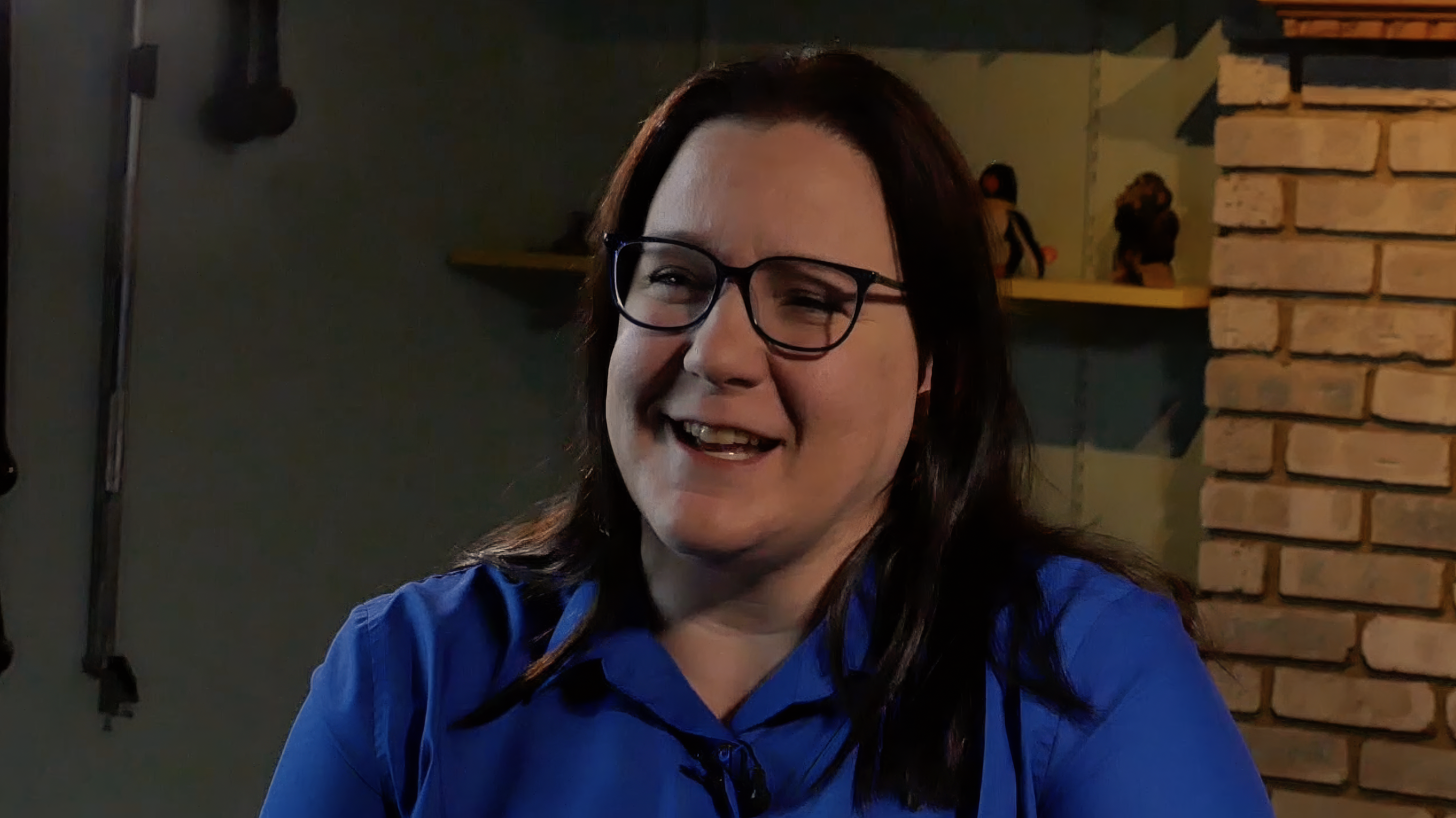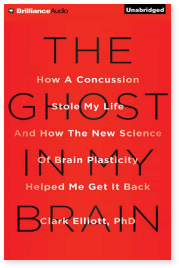Brain Injury Recovery: A Physical Therapist's Journey
Physical therapist Kristie Burns thought “my life as I once knew it is over” following a head injury in a high-speed motor vehicle crash in January 2022. She was experiencing visual processing and perceptual challenges, constant low-grade headaches, sensory overstimulation, and difficulties reading – “my eyes would jump back and forth across the printed lines,” all of which left her fatigued, nauseous, dizzy, and just plain ill.
“When in a car, the road seemed to move faster than I was. If I looked to the left, it seemed as if I were still looking to the right, and vice versa,” she relates.
Only in her early 40s, “I started planning retirement [as a physical therapist] and considered looking for work that would not require the kind of high-level problem-solving, thinking, and patient care I had been doing. I was very scared. I was thinking no way can my life continue in this way. I am too young.”
Discovering the Mind-Eye Institute: A Stroke of Luck
But something happened to halt her downward trajectory. That “something” Kristie calls a “stroke of luck.” In her desperate search for help, she found the book The Ghost in My Brain, written by DePaul University Chicago professor Clark Elliott PhD. In it, the author describes how the advanced science of the Mind-Eye Institute in Northbrook, Illinois and the successful clinical work of its founder and research director Deborah Zelinsky OD helped begin resolving his eight years of struggles with symptoms of a traumatic brain injury in a matter of a few weeks. Along with the cognition work of Donalee Markus PhD, president of Designs for Strong Minds in Highland Park, Illinois, Dr. Elliott was back to “better than normal” within two years, Dr. Zelinsky relates.
“Dr. Elliott’s book resonated with me,” says Kristie, who is a DePaul University alumna. “I went on the Mind-Eye web site, completed the questionnaire, and had a call back [from a patient advocate] in 10 minutes.”
Traumatic Brain Injury (TBI): Mind-Eye Institute Treatment Results
In the weeks and months following her first Mind-Eye appointment in late spring 2023, “I began noticing positive changes. I was better able to process words – not stuttering every sixth or seventh word when talking. I no longer had the underlying, annoying headache that had plagued me for more than a year. And my eyes were more relaxed when I worked; I was not so fatigued.”
Kristie also slowly regained the ability to look quickly from one thing to the next without becoming overwhelmed. “I could again look from a computer screen to a patient and then down to papers on my desk,” she says.
“Of course, today, I still have my good days and bad days, but the bad days are not as bad as they once were. I continue experiencing overall, tangible improvements in my life.” says Kristie. She is even back to exercising again. “After the car accident, exercise was impossible. Every time I tried to run, my heart rate would soar, and I would get nauseous. Worse, I could barely stand on my own two feet. But, today, I can exercise and push my heart rate up without experiencing all the symptoms.”
Nothing Magical - Just an Advanced Approach to Optometric Science
Although some patients call what the Mind-Eye Institute does “magic,” Dr. Zelinsky says “there is no magic about it. We are using advanced optometric science to make positive changes in people’s lives.”
Indeed, The Mind-Eye Institute team is internationally known for the use of highly individualized therapeutic lenses, filters, and other advanced optometric tools to manipulate the amount, angle, and intensity of light passing through a patient’s retina. Such manipulation – called retinal stimulation -- can create changes in the brain function of patients struggling with the symptoms of stroke, neurological disorders, concussion, and traumatic brain injury like that suffered by Kristie Burns.
Noninvasive retinal stimulation also has proven effective in building undeveloped visual processing skills in children – and adults – with autism spectrum disorder, attention deficit hyperactivity disorder, and other learning difficulties.
“The retina is composed of brain tissue and plays a critical role in the central nervous system. Environmental feedback signals (in the form of light) enter the retina and convert into electrical signals, which pass through neurons and interact with key brain structures. These retinal signals affect not only the visual cortex but other, significant regions of the brain as well,” Dr. Zelinsky explains.
“Most people think of the eyes simply as an input center that sees the environment and brings visual information into the brain. Indeed, standard eye testing usually just involves examination of central eyesight, eye movement, and general health of the eyes. But, in cases of patients with brain trauma, autonomic dysfunction, neurological disease, or undeveloped and immature learning skills, clearly more evaluation is required. Testing for those patients should include peripheral eyesight usage and the interplay between eyes, ears, and other senses,” Dr. Zelinsky says.
A New Lease on Life: Beyond Brain Injury Recovery
Following the car collision, Kristie continued work as a physical therapist, but was limited to only one-on-one sessions with patients. “I could work with one patient at a time in a quiet room outside the general therapy area. Otherwise, I would become overstimulated and that would negatively affect my brain,” she recalls.
Kristie began feeling “somewhat better” over time, but she knew “things were still not quite right.” That became glaringly apparent to her when trying to drive home one evening during a freak snowstorm. “I could see the flakes striking the windshield, but they blinded me from seeing the road. I could not focus. I kept thinking I should be able to drive in snow.”
“I did not expect symptom relief after just one appointment, but I experienced exactly that.”
- Kristie Burns, Mind-Eye Patient
Her first appointment at Mind-Eye was the spring of 2023 – more than a year after the car crash and head injury. After comprehensive testing and evaluation, Kristie was diagnosed as being too focused on one target and unable to process what was happening in her periphery. “Dr. Zelinsky also indicated the background behind whatever I might be looking at overstimulated my brain; I could not process the background,” explains Kristie.
“Dr. Zelinsky then tweaked the prescription for the eyeglasses I was wearing at the time. She said the intent was to bend light differently as it entered my eye.” The result: “I felt at ease going home. As a passenger in a car, I was able to keep my eyes open even with cars moving in different directions around me,” Kristie says. “I had not expected this kind of symptom relief in one appointment.
“I don’t know what I would have been doing today had I not discovered the Mind-Eye Institute. The staff there have changed my life. By helping me, they have enabled me to return and help other patients as a physical therapist,” Kristie says.
Although Kristie Burns reports progressive symptom relief, her experience is not always the norm, nor is it guaranteed for every patient. Check out the Mind-Eye Institute at www.mindeye.com for additional information.


